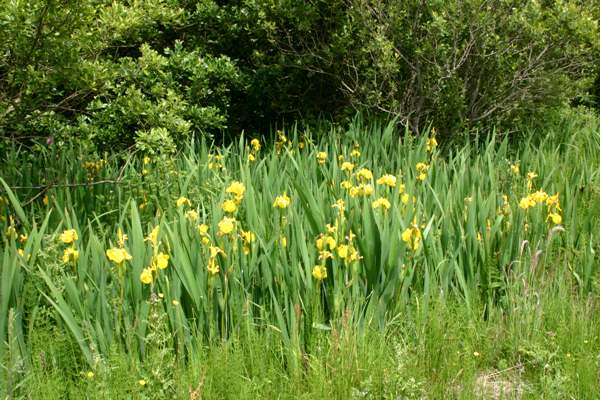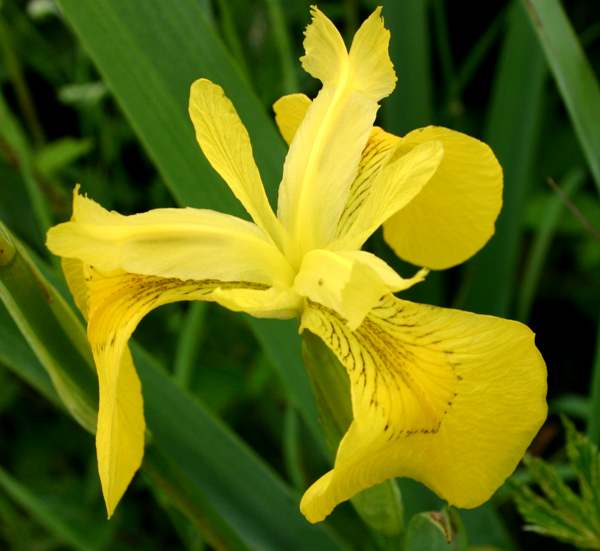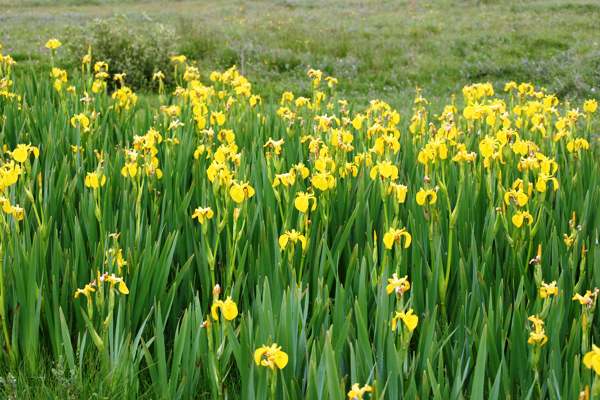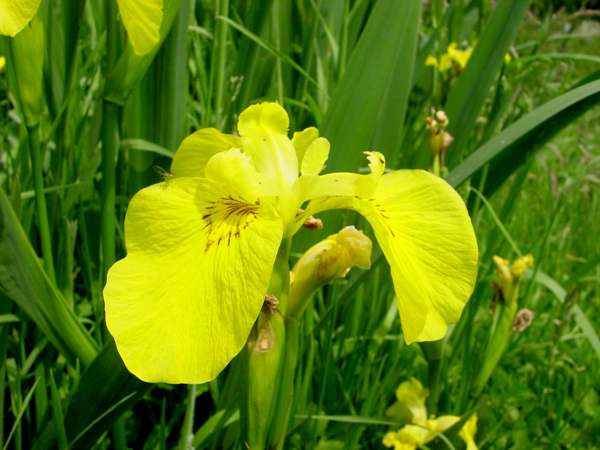Iris pseudacorus - Yellow Flag Iris
Phylum: Anthophyta - Class: Equisetopsida - Order: Asparagales - Family: Iridaceae

This tall marginal plant, which forms dense stands and spread very easily once established, is very common beside rivers, lakes and canals throughout Europe. In Britain and Ireland, Yellow Flag Iris can grow up to a metre in height; it blooms from May until August and is one of our best-known and loved wildflowers.

The stems are often branched, and plants form dense colonies providing sanctuary areas for small fishes such as minnows and sticklebacks as well as other aquatic wildlife.

Iris psuedacorus is popular in gardens and is frequently planted around ponds and water features. Some of the plants that are now found in the wild have escaped from nearby gardens and, once established in suitable habitat, quickly spread to form large colonies of naturalised plants that are almost indistinguishable from their wild ancestors.

We have found and photographed this plant in many places in Europe, including the Triglav National Park in Slovenia.
The plants shown on this page were photographed in Wales UK during June.
Sue Parker's latest ebook is a revised and enlarged second edition of the acclaimed Wildflowers in the Algarve - an introductory guide. Full details here...
Buy it for just £3.95 on Amazon...
Please Help Us: If you have found this information interesting and useful, please consider helping to keep First Nature online by making a small donation towards the web hosting and internet costs.
Any donations over and above the essential running costs will help support the conservation work of Plantlife, the Rivers Trust and charitable botanic gardens - as do author royalties and publisher proceeds from books by Pat and Sue.



